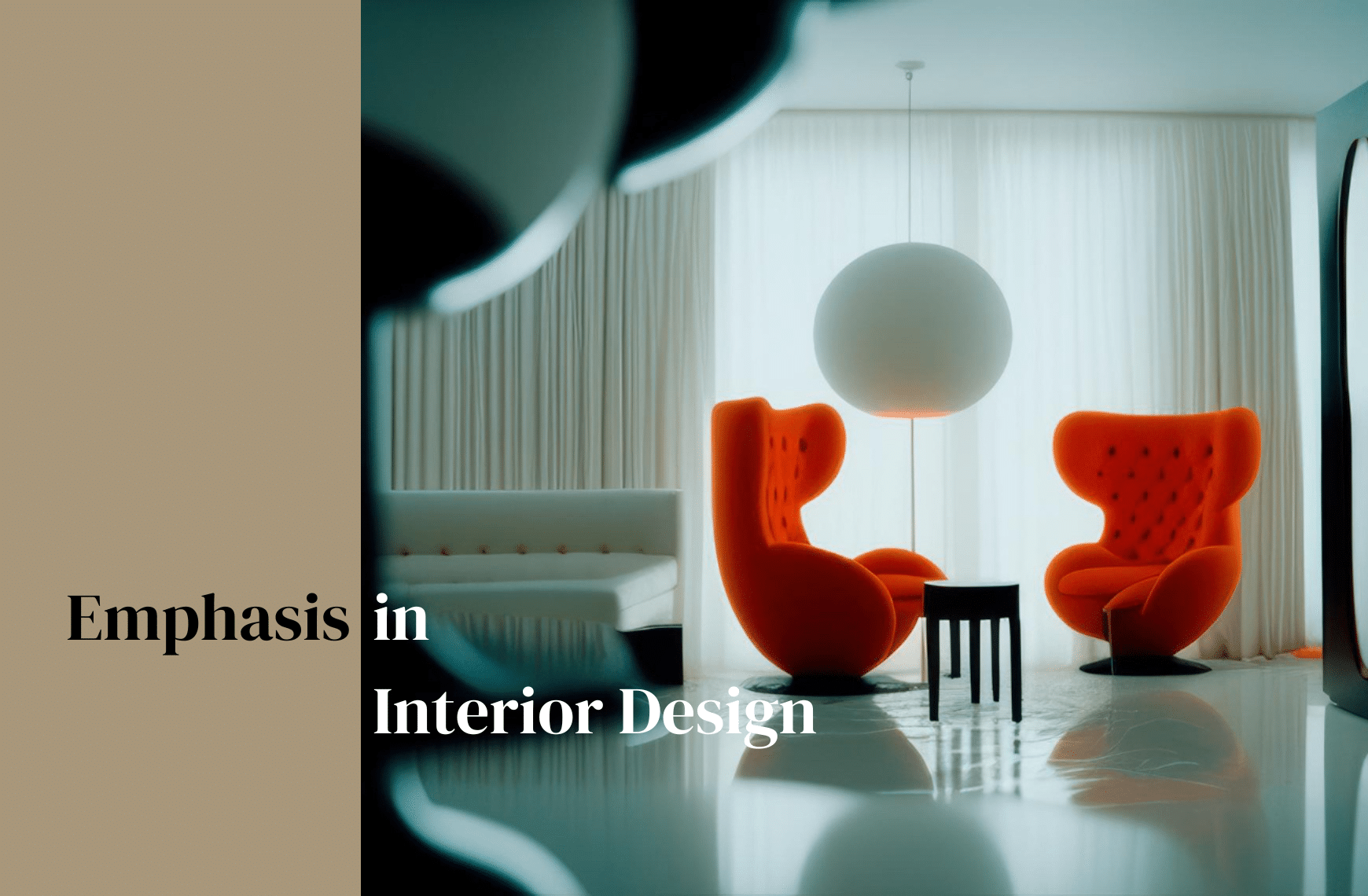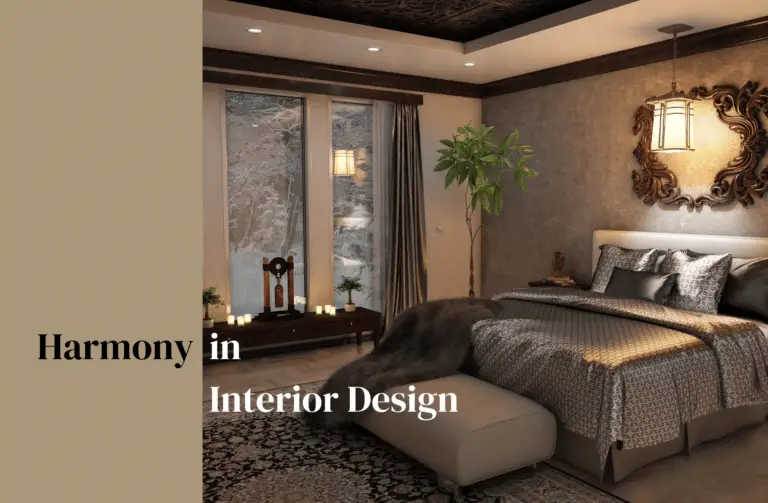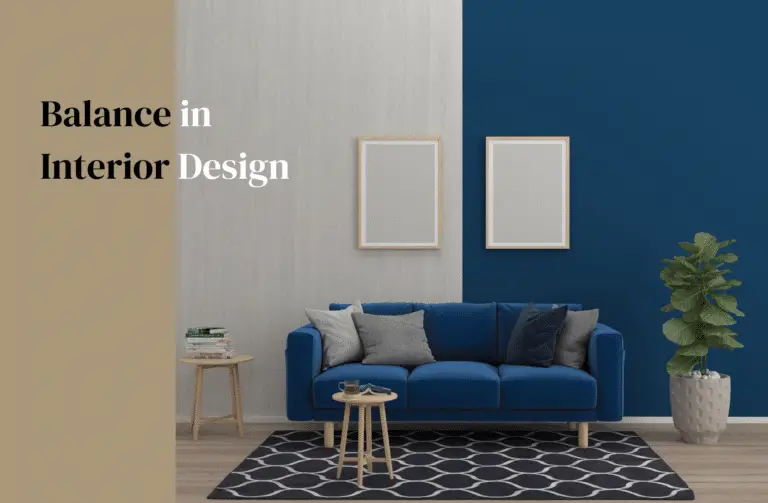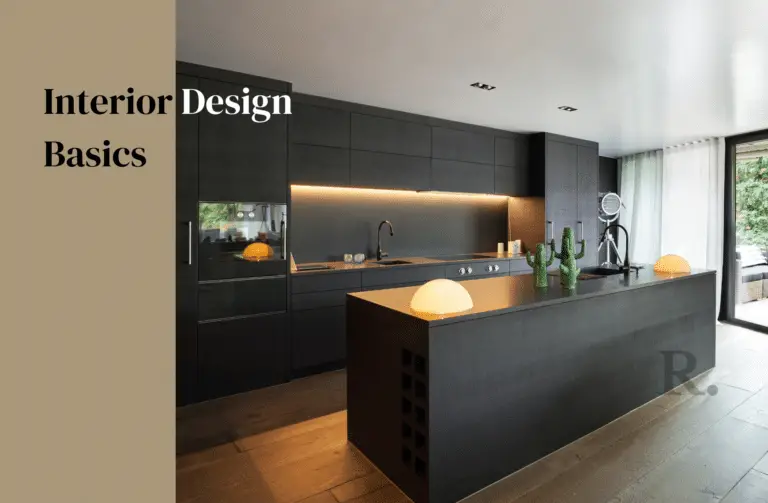Free Shipping On All Orders
5 Important Techniques to Create Emphasis in Interior Design

In the world of interior design, emphasis stands as the guiding hand that shapes the visual story of a space. It’s the art of creating points of interest that draw the eye and give a room its unique character and flow.
As you explore the world of design, understanding how to apply emphasis in a room will enable you to craft spaces that are not only aesthetically pleasing but also functionally sound and inviting.
When you step into a room, certain elements immediately stand out, commanding your attention. This isn’t by chance—it’s the result of thoughtful design choices that introduce focal points, whether through the strategic placement of furniture, the play of light, or the bold use of color and texture.
As you embark on your design journey, remember that the power of emphasis lies in balance—too little, and a space can feel unfocused; too much, and it risks becoming overwhelming.
Importance of Emphasis in Interior Design
Creating a standout space hinges on your ability to apply emphasis strategically within interior design. When you master this, your room doesn’t just look good—it resonates and leaves a lasting impression.
Here’s how you can harness this powerful concept to captivate attention and shape the room’s atmosphere:
- Contrast and Color: Introduce bold patterns or stark color contrasts. This simple approach can make a sofa or a painting the star of your living space.
- Textures and Materials: Mix up surfaces with a velvet throw or a brick feature wall for a touch of sophistication. These elements add layers, making your chosen focal point pop.
- Scale and Proportion: Opt for a large, eye-catching piece. A sizable artwork or an oversize lamp commands attention and sets the stage for everything else.
- Lighting: Accent lighting can spotlight art pieces, and ambient lighting can shift the room’s mood from bright and energetic to soft and intimate.
- Furniture Arrangement: Position your furniture in a way that navigates the gaze. A thoughtfully placed chair or table can guide the viewer’s eyes to your room’s showcase.
1. Arranging Your Space
Situating Key Furniture
Carefully position key pieces of furniture to enhance the room’s natural anchor points.
For example, set up your seating to face a charming fireplace, ensuring it becomes a cozy hub.
The largest items like a armoire should orbit around pivotal areas, such as an attention-grabbing sculpture or a well-adorned mantlepiece, to direct visual flow.

Highlighting with Lighting
Light is a masterful tool to spotlight your room’s prominent features.
Think of incorporating targeted lighting solutions—think strategically placed lamps and ceiling fixtures—to illuminate an impressive art piece or an architectural nuance.
Remember, a variety of light sources can add warmth to a space while accentuating its best attributes.

Showcasing Architectural Details
Use the built-in architectural features of your space as natural emphasis points.
If your room boasts interesting architecture like French doors or unique moldings, consider painting them with accent colors or setting decorative items like vases or statues to draw the eye. A well-placed mirror can magnify intricate patterns or textures inherent in the space.

Playing with Hues and Surfaces
To really highlight a section of your space, don’t hesitate to use contrasting colors or an array of textures.
A focal wall painted in a bold shade or a sofa with vibrant throw pillows can make a significant impact. Materials with different finishes, such as a wooden coffee table paired with a metallic lamp, contribute to a layered look that invites interest.

2. Highlighting Design Features in Your Space
Distinguishing with Opposites
Using contrast is a dynamic way to captivate interest in your space.
Imagine a splash of bright color on an accent wall pulling your gaze, or the interplay of bold colors with neutral tones creating drama.
Diverse textures can play a similar role; a smooth, modern surface juxtaposed with a rich, shaggy rug can make each element pop while working together seamlessly.
- Color Contrast: Pair contrasting colors for vitality. A lemon yellow throw on a navy couch, for instance, stands out.
- Material Mix: Combine different materials to define areas. Think metallic accents against wood.
Sizing It Up Accurately
Intelligent proportion is about the harmonious distribution of objects within a space.
Scale matters because it influences how cohesive the room feels.
When you size up the decor and furniture correctly, you create a hierarchy that naturally guides the eye and ensures every piece has its place.
- Visual Balance: Balance an oversized mirror with smaller framed photos for proportionate appeal.
- Size Harmonization: Scale furniture to match room dimensions for a well-tailored look.
Respecting Spatial Relationships
Scale is not just about a single item, but its relation to the space and objects around it.
You want your furnishings to sing in chorus, not fight for the solo.
Use larger elements in expansive rooms to create warmth, and smaller ones in cozy areas to maintain an airy feel. This ensures each piece has enough room to stand out without crowding the space.
- Pattern Play: Opt for larger patterns in spacious areas and subtler patterns in compact spaces.
- Fitting Furnishings: Scale your furnishings—like a grand piano in a large living room can be a stunning focal point.
3. Exploring Varieties of Focus in Interior Design
Balancing Act: Mirrored Focus
In the realm of interior design, duplicating or mirroring elements on either side of a central line can establish a serene and well-ordered setting within your living space.
Imagine positioning twin armchairs across from one another, flanking a cozy fireplace – this technique crafts an environment steeped in convention and tranquility.
- Use symmetrical furnishings to inject calm
- Employ pairings of décor (lamps, vases) for a formal vibe
- Center the layout on an anchor piece, like a fireplace or console table

Dynamic Asymmetry: Informal Focus
If you’re keen on injecting a bit of energy and informality into a room, introducing variations in height, hue, pattern, or texture while preserving a sense of equilibrium can be your strategy.
For example, in your sleeping quarters, juxtapose a towering bookshelf with a lower profile chest of drawers to create an engaging yet balanced asymmetrical aesthetic.
- Mix different shapes and forms to maintain interest
- Contrast statement pieces of furniture for a relaxed atmosphere
- Balance can be achieved without identical pieces

Centric Patterns: Radial Focus
Less conventional yet striking, radial focus pulls your attention to a central point, then radiates outward.
This is especially impactful for round tables or circular seating arrangements. It’s ideal for when you aim to curate spaces that revolve around a singular, pivotal element.
- Embrace round tables, chandeliers, or rugs as central focal points
- Arrange items like chairs or lights in a spreading pattern
- Ideal for circular zones or to highlight spiral architectural features

4. Enhancing Focus in Varied Decor Styles
Contemporary Spaces
In contemporary spaces, you can guide focus and maintain harmony by spotlighting certain key elements.
A compelling geometric lighting fixture can anchor a dining space, while a grand, nonrepresentational art piece can serve as a living room centerpiece.
Through the use of sharp lines, stark color contrasts, and notable furniture, emphasis in a room is adeptly established. Consider accessorizing with bold art or a singular piece of statement furniture to set the tone.
| Features to Highlight in Contemporary Decor | Techniques for Emphasis |
|---|---|
| Geometric light fixtures | Strategic lighting |
| Large abstract paintings | Contrast in color and form |
| Statement furniture | Minimal, impactful decor placement |
Timeless Elegance
For a traditional setting, emphasis shifts to accentuating the room’s architectural character.
Crown molding, wainscoting, and built-in shelves can serve as natural focal points. You might spotlight an heirloom desk or a stately fireplace to imbue personality.
Employ strategic lighting and consider layered rugs or decorative items that complement such classical features to foster a balanced ambiance.
- Utilize strategic lighting to highlight architectural details.
- Place antique or carved wood furniture as a classic statement.
- Include textured fabrics and accents to complement the traditional aesthetic.
Simplified Beauty
Embrace the challenge of emphasis within minimalist design through the interplay of light and shadow.
Let natural light be your ally, using large windows to amplify open spaces and textures.
Merge sleek surfaces with cozy textiles to infuse warmth. Rely on thoughtful placement of the few, carefully selected decor elements to let each piece tell its own story of simplicity.
- Amplify space with floor-to-ceiling windows that capture natural light.
- Combine contrasting textures, like soft furnishings against smooth surfaces.
- Focus on purpose-driven furniture and smart storage solutions to maintain clutter-free surfaces.
5. Harmonious Visual Flow Tactics
Tidiness in Design
Keeping an area free of disorder is critical to ensure that it doesn’t become overwhelming. Here’s how you can make sure to retain an orderly environment:
- Choose your room’s centerpieces with intention, allowing each to stand out without overpowering one another.
- Restrain the use of bold items and colors to prevent a mix-up effect and maintain visual fluidity.
- Integrate diverse textures and designs with subtlety, which can enrich the space’s depth while preventing sensory overload.

Establishing Equilibrium
Achieving a balanced and cohesive look is vital for visual serenity. Consider these points as you strive for equilibrium:
- Spread visual elements evenly to stop one side from seeming heavier than the other.
- Mix different sizes in your furniture pieces. A few key larger items can be balanced out with smaller, more minimal pieces.
- Blend bold tones with more subdued shades in your color schemes to harmonize your environment.

Utilizing Unoccupied Space
The thoughtful use of unoccupied space can greatly enhance the emphasis you’re aiming for:
- Allow walls some free space around key points of interest to let them stand out unimpeded.
- Eschew overstuffing your space with furniture.
- Choosing an open plan will give viewers’ eyes a place to rest.
- Adopt clever storage to keep disorder at bay and support a neat and orderly space.
Common Questions About Enhancing Your Space with Design Focus
Defining Design Focus in Your Home
Design focus involves curating distinct points within your living area that naturally draw the eye. These points, or focal pieces, act as anchors, stealing the spotlight in the decor narrative.
Strategies for Creating a Design Focus
To create these eye-catching moments, consider:
- Color: Bold shades can make an object stand out.
- Contrast: Play up differences in color and texture to spark visual interest.
- Scale: An oversized piece can become the star of your space.
- Unique Features: Introduce one-of-a-kind elements that act as conversation starters.
The Value of Having a Design Focus
By intentionally highlighting certain aspects of your decor, you pave the way for:
- Visual Interest: Keeps the observer’s gaze moving and engaged.
- Hierarchy: Establishes an order of attention in a room.
- Balance: Ensures that all parts of your room feel anchored and complete, avoiding a sense of chaos or emptiness.
Remember, sprinkling personal touches throughout your environment makes it uniquely yours.
Embrace the strategy of design focus to revitalize your space.
Frequently Asked Question
What is Emphasis in Interior Design?
Emphasis in interior design refers to creating a focal point in a space that draws attention. This can be achieved through contrasting colors, unique pieces, or striking patterns.
How do you create Emphasis in a room?
To create emphasis, use bold elements like a vibrant piece of art, an accent wall, or distinctive furniture. Position these elements where they naturally attract the eye.
Why is Emphasis important in Interior Design?
Emphasis is crucial as it guides the viewer’s attention around a room, creating a visually engaging and harmonious space. It ensures that key elements stand out, balancing the overall design.
Craving more eye-catching design tips? Follow us on Pinterest for endless inspiration or subscribe to our newsletter for exclusive techniques on creating stunning spaces with Emphasis in Interior Design!





















“This is a great article! I especially loved the point about using color as a tool for emphasis. Sometimes, a bold pop of color can really transform a space.